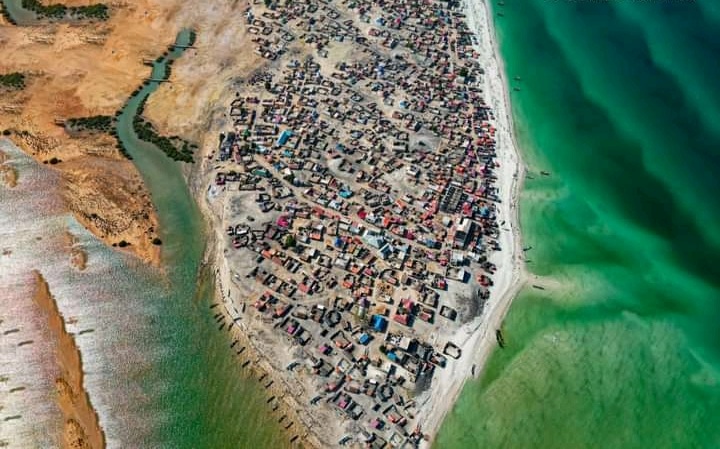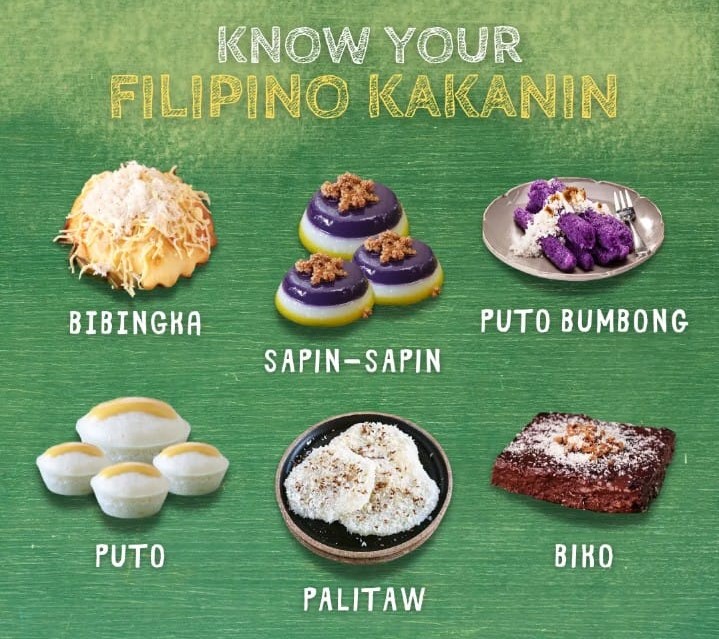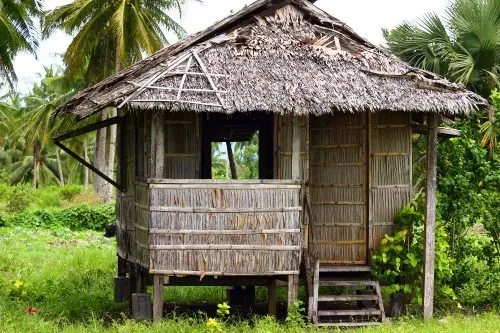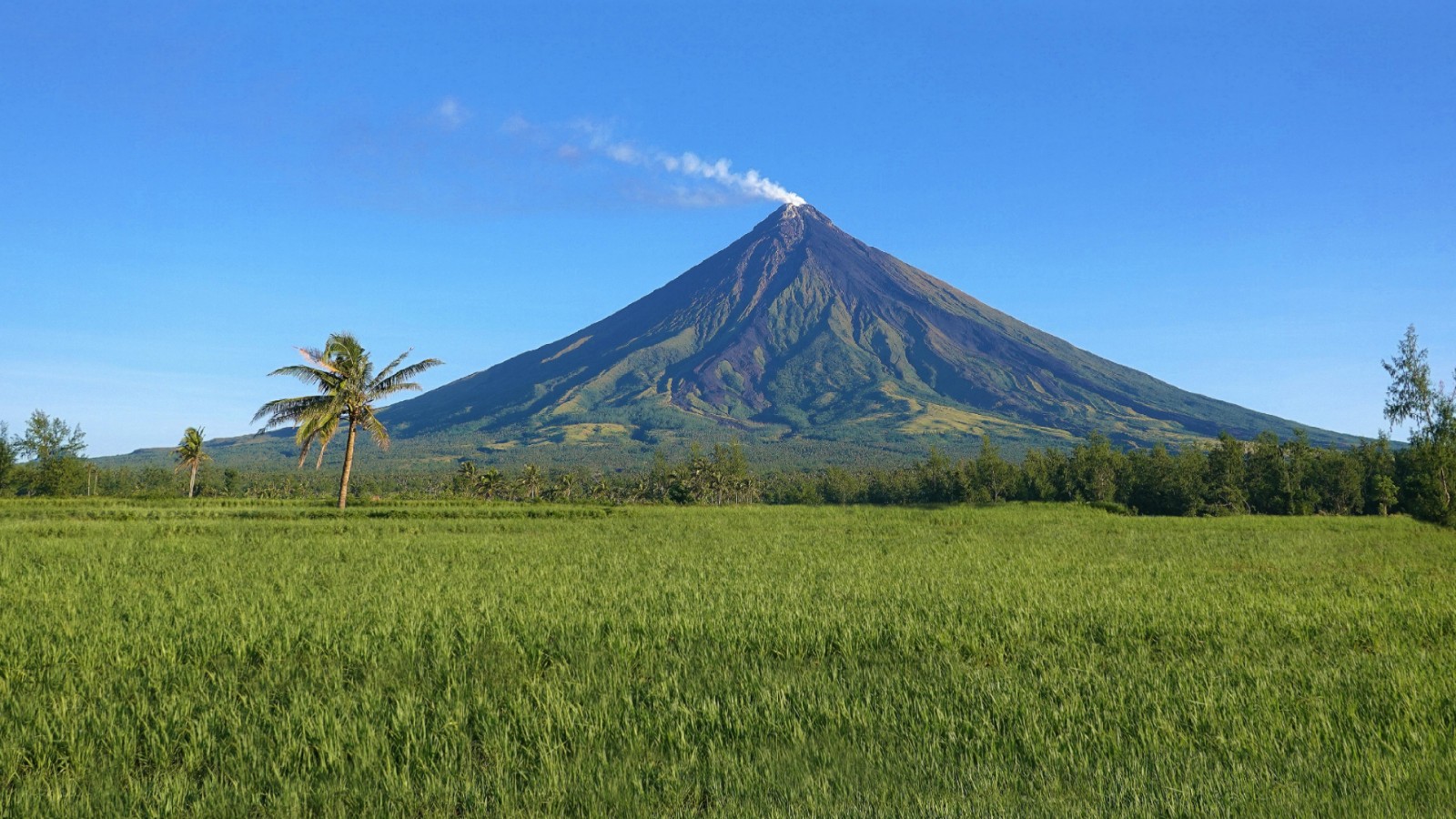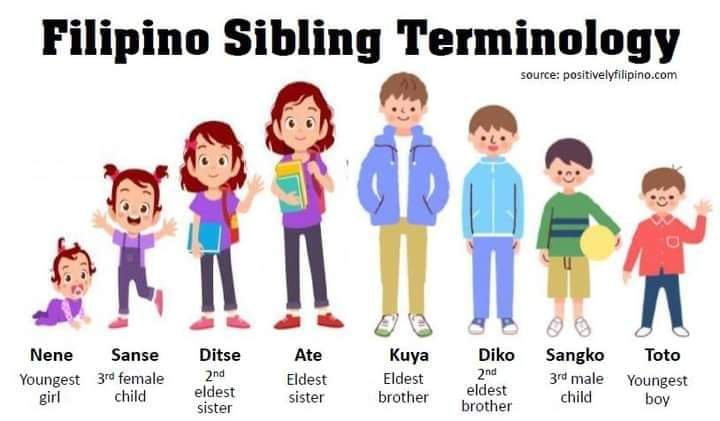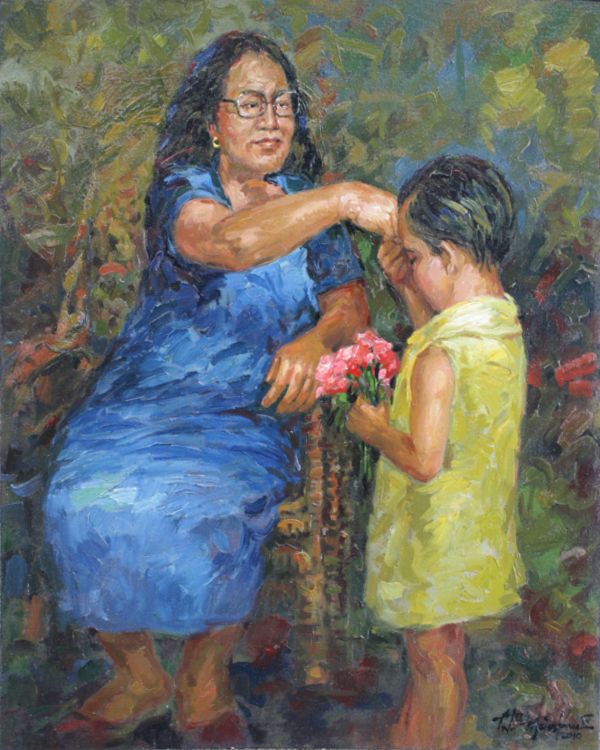-
Fil d’actualités
- EXPLORER
-
Pages
-
Groupes
- Forums
- Développeurs
Dylan Learns about the Philippines! This page is ALL about the Philippines wherein one of Dylan's Moms (Mama E) was born and raised. This page will showcase what the country has to offer; from its food and delicacies, to tourist spots and destinations, its rich culture, traditions and history! Plus trivias and quizzes for Somee Fam to join! Let's all help and join Dylan Learn about the Philippines!
- 28 Les gens qui ont lié ça
- 30 Articles
- 46 Photos
- 0 Vidéos
- 0 Aperçu
- Éducation
Mises à jour récentes
- #Kakanin
#NativeDelicacies
Bibingka is a type of rice cake traditionally made with rice flour, coconut milk, egg and margarine.
Other delicacies are also rice flour based or galapong such as puto, palitaw, puto bungbong, sapin-sapin, and biko. Though mostly made from similar ingredients, they each have their particular rich taste. Savour the taste!
#PhilippineCustoms
#PhilippineTraditions
#Philippines
#SomeePh
#projectPh_Jed#Kakanin #NativeDelicacies Bibingka is a type of rice cake traditionally made with rice flour, coconut milk, egg and margarine. Other delicacies are also rice flour based or galapong such as puto, palitaw, puto bungbong, sapin-sapin, and biko. Though mostly made from similar ingredients, they each have their particular rich taste. Savour the taste! #PhilippineCustoms #PhilippineTraditions #Philippines #SomeePh #projectPh_Jed0 Commentaires 0 Parts 7179 Vue2 Connectez-vous pour aimer, partager et commenter!
Connectez-vous pour aimer, partager et commenter! - #DambanaNgKagitingan
#MtSamatCross
Mt. Samat, along with the fortified Corregidor Island, had been the site of the most vicious battle in 1942 against the Japanese Imperial Army. On top of this mountain, a memorial shrine complex marked by a giant cross was built in commemoration of the gallant Filipino and American Soldiers who fought during World War 2. The height is 92 meters which symbolizes the 92 days of that war that has been fought.
Until now, it is the second tallest cross in the world. The tallest is the Holy Cross of the Valley of the Fallen in Spain.
#PhilippineCustoms
#PhilippineTraditions
#PhilippineHistory
#Philippines
#SomeePh
#projectPh_Jed#DambanaNgKagitingan #MtSamatCross Mt. Samat, along with the fortified Corregidor Island, had been the site of the most vicious battle in 1942 against the Japanese Imperial Army. On top of this mountain, a memorial shrine complex marked by a giant cross was built in commemoration of the gallant Filipino and American Soldiers who fought during World War 2. The height is 92 meters which symbolizes the 92 days of that war that has been fought. Until now, it is the second tallest cross in the world. The tallest is the Holy Cross of the Valley of the Fallen in Spain. #PhilippineCustoms #PhilippineTraditions #PhilippineHistory #Philippines #SomeePh #projectPh_Jed0 Commentaires 0 Parts 7581 Vue4
- #Narra
#NationalTree
#PhilippineTrees
Narra was declared in 1934 the national tree of the Philippines. This strong hardwood tree symbolizes strength, durability, endurance, and persistence. It resembles the Filipino spirit specifically the strength of character as the Filipinos struggled to attain freedom and independence.
Many uses of its wood include musical instruments, cartwheels, flooring, carvings, furniture, house columns, and decoratives. It has also medicinal value as it is used for treatment against bladder issues, prickly heat, syphilis, headaches, diarrhea, boils, ulcers, and mouth sores.
As an environmental benefit, aside from providing shade and protection against erosion, it is a rich source of pollen for bees to produce honey.
The narra tree is scarce now and so there are efforts to do tree planting in strategic areas. If it really is a must to cut down a narra tree, you need a special permit for that although sadly many constructors and illegal loggers don't mind following the process.
How can we help? The Department of Environment and Natural Resources provides free narra seedlings. You can simply include tree planting among your social and environmental projects. Trees can save lives!
#PhilippineCustoms
#PhilippineTraditions
#Philippines
#SomeePh
#projectPh_Jed#Narra #NationalTree #PhilippineTrees Narra was declared in 1934 the national tree of the Philippines. This strong hardwood tree symbolizes strength, durability, endurance, and persistence. It resembles the Filipino spirit specifically the strength of character as the Filipinos struggled to attain freedom and independence. Many uses of its wood include musical instruments, cartwheels, flooring, carvings, furniture, house columns, and decoratives. It has also medicinal value as it is used for treatment against bladder issues, prickly heat, syphilis, headaches, diarrhea, boils, ulcers, and mouth sores. As an environmental benefit, aside from providing shade and protection against erosion, it is a rich source of pollen for bees to produce honey. The narra tree is scarce now and so there are efforts to do tree planting in strategic areas. If it really is a must to cut down a narra tree, you need a special permit for that although sadly many constructors and illegal loggers don't mind following the process. How can we help? The Department of Environment and Natural Resources provides free narra seedlings. You can simply include tree planting among your social and environmental projects. Trees can save lives! #PhilippineCustoms #PhilippineTraditions #Philippines #SomeePh #projectPh_Jed0 Commentaires 0 Parts 8205 Vue3
- #Philippinehouses
#bahaykubo
Bahay Kubo as an indigenous house to the Philippines is usually made of Nipa or Anahaw for the roofs. They are designed to be steeply pitched to allow the quick flow down of water during the rainy season.
The walls varies from bamboo mats (sawali), anahaw or nipa. Its posts, and columns are of either bamboo or hardwood. These designs gives a natural cooling effect even during the hot summer season.
Typically built with large windows or Dungawan to let more air in and natural light.
Other sections of the house incudes Batalan where dishwashing, lavatory use, cooking, and sometimes bathing area as well. SILID on the other hand is the living area. In larger bahay kubos, there could be SILID where the family can sleep but in smaller versions, the living room serves as the dining and sleeping area as well.
Bahay kubos until now are still widely used especially in barrios or rural areas.
#PhilippineCustoms
#PhilippineTraditions
#Philippines
#SomeePh
#projectPh_Jed#Philippinehouses #bahaykubo Bahay Kubo as an indigenous house to the Philippines is usually made of Nipa or Anahaw for the roofs. They are designed to be steeply pitched to allow the quick flow down of water during the rainy season. The walls varies from bamboo mats (sawali), anahaw or nipa. Its posts, and columns are of either bamboo or hardwood. These designs gives a natural cooling effect even during the hot summer season. Typically built with large windows or Dungawan to let more air in and natural light. Other sections of the house incudes Batalan where dishwashing, lavatory use, cooking, and sometimes bathing area as well. SILID on the other hand is the living area. In larger bahay kubos, there could be SILID where the family can sleep but in smaller versions, the living room serves as the dining and sleeping area as well. Bahay kubos until now are still widely used especially in barrios or rural areas. #PhilippineCustoms #PhilippineTraditions #Philippines #SomeePh #projectPh_Jed0 Commentaires 0 Parts 7164 Vue3
- #HomeTown
Fellow SoMeeian this is Nueva Ecija. Mama E's province. Nueva Ecija is one of the provinces located in the island of Luzon-Philippines. A 2 and a half hour drive from Manila. Nueva Ecija is an agricultural province and is known as the "Rice Granary" of the Philippines. "Tricycle Capital of the Philippines" and "Milk Capital of the Philippines". Most of its agricultural land is preserved and is being used for farming and poultry.
When it comes to health care innovations, educational services and facilities, delicacies and tourist destinations such as: Minalungao Park Pantabangan Lake, Lupao Pinsal Falls, Nabao Lake, Fort Magsaysay Dam (Pahingahan), Tanawan, Highland Bali Resort, Nueva Ecija is not left behind to its nearby provinces.
One of the province's university- CLSU university has also been cited as one of the 100 most significant educational institutions in Asia.
#ProjectPhDbyJED
#NuevaEcija
#Philippines
https://youtu.be/x8zQFqXu5tk#HomeTown Fellow SoMeeian this is Nueva Ecija. Mama E's province. Nueva Ecija is one of the provinces located in the island of Luzon-Philippines. A 2 and a half hour drive from Manila. Nueva Ecija is an agricultural province and is known as the "Rice Granary" of the Philippines. "Tricycle Capital of the Philippines" and "Milk Capital of the Philippines". Most of its agricultural land is preserved and is being used for farming and poultry. When it comes to health care innovations, educational services and facilities, delicacies and tourist destinations such as: Minalungao Park Pantabangan Lake, Lupao Pinsal Falls, Nabao Lake, Fort Magsaysay Dam (Pahingahan), Tanawan, Highland Bali Resort, Nueva Ecija is not left behind to its nearby provinces. One of the province's university- CLSU university has also been cited as one of the 100 most significant educational institutions in Asia. #ProjectPhDbyJED #NuevaEcija #Philippines https://youtu.be/x8zQFqXu5tk 0 Commentaires 0 Parts 5001 Vue1
0 Commentaires 0 Parts 5001 Vue1
- #Mountains
#Volcanoes
Fellow Someeans, This is Mount Mayon, a Strato active Volcano in the province of Albay in Bicol Philippines.
A popular tourist spot and had been renowned for its "perfect cone" because of its symmetric conical shape.
Mayon is the most active volcano in the Philippines, .
Mayon is the most active volcano in the Philippines, erupting over 47 times in the past 500 years. Its activity is regularly monitored by the Philippine Institute of Volcanology and Seismology (PHIVOLCS) Historical observations accounted its first eruption in 1616. The first eruption for which an extended account exists was the six-day event of July 20, 1766.
Source: https://en.wikipedia.org/wiki/Mayon
#Philippines
#PhilippineCulture
#ProjectPHDbyJED#Mountains #Volcanoes Fellow Someeans, This is Mount Mayon, a Strato active Volcano in the province of Albay in Bicol Philippines. A popular tourist spot and had been renowned for its "perfect cone" because of its symmetric conical shape. Mayon is the most active volcano in the Philippines, . Mayon is the most active volcano in the Philippines, erupting over 47 times in the past 500 years. Its activity is regularly monitored by the Philippine Institute of Volcanology and Seismology (PHIVOLCS) Historical observations accounted its first eruption in 1616. The first eruption for which an extended account exists was the six-day event of July 20, 1766. Source: https://en.wikipedia.org/wiki/Mayon #Philippines #PhilippineCulture #ProjectPHDbyJED0 Commentaires 0 Parts 6823 Vue4
- #Elders
There are many ways we call our Moms and Dads. For Moms, it can be Mama, Nanay, Inay, Nanang, and Ima. And for our Dads, It can be Papa, Tatay, Itay, Tatang, and Tang.
Our Uncle we call as Tito, Bapa, or Tiyo. Our Aunt we call as Tita, Dara, or Tiya.
One thing that will never be allowed is for our parents or elders to be called by their first name.
#ProjectPHDbyJED
#SoMeePh
#SoMeeCulture
#SoMeeTraditions
#Philippines#Elders There are many ways we call our Moms and Dads. For Moms, it can be Mama, Nanay, Inay, Nanang, and Ima. And for our Dads, It can be Papa, Tatay, Itay, Tatang, and Tang. Our Uncle we call as Tito, Bapa, or Tiyo. Our Aunt we call as Tita, Dara, or Tiya. One thing that will never be allowed is for our parents or elders to be called by their first name. #ProjectPHDbyJED #SoMeePh #SoMeeCulture #SoMeeTraditions #Philippines0 Commentaires 0 Parts 4727 Vue 3
3
- #StoNino
#FeastDay
Simple food we prepare as a thanksgiving for the Feast Day of Sto Nino. We eat together which serves at the same as a bonding for my kids, siblings and parents.
#ProjectPHDbyJED
#SoMeePh
#SoMeeCulture
#SoMeeTraditions
#Philippines
0 Commentaires 0 Parts 1637 Vue1
- #RepectForElders
To show respect to the elderly population, there are honorifics before certain people's names, and calling someone older than you by their first name is impolite and rude in the Philippines.
Loosely, for elder brothers, we call them Kuya and for elder sisters, we call them Ate. The same for elder cousins. We lovingly call the youngest as "bunso." For even more specific appellations for each sibling, refer to how we call each other traditionally:
** Toto - youngest brother
** Diko- second eldest brother (rooted in di or ji, depending on the Chinese/Japanese bent)
** Sangko - third eldest brother (came from the Japanese sansei, third in line)
** Kuya - eldest brother (from Chinese ordinal "co")
** Nene - youngest sister
** Ditse - second eldest sister (rooted in di or ji, depending on the Chinese/Japanese bent)
** Sanse - third eldest sister (came from the Japanese sansei, third in line)
** Ate - eldest sister (came from the word Aitche, or "ichi" meaning "first" in Japanese or Hokien)
This actually we inherited from our Chinese and Japanese interactions a very long time ago.
Credits to the author of this facebook post:
https://www.facebook.com/discoverasean10/photos/a.789563851228791/2007405066111324/?type=3
#PhilippineCustoms
#PhilippineTraditions
#Philippines
#SomeePh
#projectPh_Jed#RepectForElders To show respect to the elderly population, there are honorifics before certain people's names, and calling someone older than you by their first name is impolite and rude in the Philippines. Loosely, for elder brothers, we call them Kuya and for elder sisters, we call them Ate. The same for elder cousins. We lovingly call the youngest as "bunso." For even more specific appellations for each sibling, refer to how we call each other traditionally: ** Toto - youngest brother ** Diko- second eldest brother (rooted in di or ji, depending on the Chinese/Japanese bent) ** Sangko - third eldest brother (came from the Japanese sansei, third in line) ** Kuya - eldest brother (from Chinese ordinal "co") ** Nene - youngest sister ** Ditse - second eldest sister (rooted in di or ji, depending on the Chinese/Japanese bent) ** Sanse - third eldest sister (came from the Japanese sansei, third in line) ** Ate - eldest sister (came from the word Aitche, or "ichi" meaning "first" in Japanese or Hokien) This actually we inherited from our Chinese and Japanese interactions a very long time ago. Credits to the author of this facebook post: https://www.facebook.com/discoverasean10/photos/a.789563851228791/2007405066111324/?type=3 #PhilippineCustoms #PhilippineTraditions #Philippines #SomeePh #projectPh_Jed0 Commentaires 0 Parts 6453 Vue4
- A definite "must teach" to Dylan
#PhilippineTradition- #Pagmamano
Every culture has its way of showing respect to elders. In the Philippines, the traditional gesture is called “Pagmamano.” #Pagmamano is similar to hand kissing. The younger person asks for the elder’s right hand and presses it on their forehead; this means that they’re asking for the elder’s #blessing and acknowledging their #wisdom. It’s typically done before entering an elder’s home or as a greeting when you meet them.
“Mano po” is the phrase used to initiate the greeting. “Mano” derived from the Spanish word “hand” and “po” a Tagalog word added to sentences as a sign of respect. “Mano po” can be translated as “your hand please” and “may I have your blessing? Once the elder gives you their hand, it means that they have given you their blessing and oftentimes they will respond to you by saying “Kaawaan ka ng Diyos.” which means “God bless you or May the Lord have mercy on you.”
There’s no age limit when using pagmamano but it’s best to teach the #youngergeneration as early as we can so they get to remember and apply it. So the next time you visit the Philippines and see someone older, greet them by saying “Mano po”.
#Philippines
#PhilippineCulture
#ProjectPHDbyJED
Source: Pagmamano - ART OF BLADEA definite "must teach" to Dylan #PhilippineTradition- #Pagmamano Every culture has its way of showing respect to elders. In the Philippines, the traditional gesture is called “Pagmamano.” #Pagmamano is similar to hand kissing. The younger person asks for the elder’s right hand and presses it on their forehead; this means that they’re asking for the elder’s #blessing and acknowledging their #wisdom. It’s typically done before entering an elder’s home or as a greeting when you meet them. “Mano po” is the phrase used to initiate the greeting. “Mano” derived from the Spanish word “hand” and “po” a Tagalog word added to sentences as a sign of respect. “Mano po” can be translated as “your hand please” and “may I have your blessing? Once the elder gives you their hand, it means that they have given you their blessing and oftentimes they will respond to you by saying “Kaawaan ka ng Diyos.” which means “God bless you or May the Lord have mercy on you.” There’s no age limit when using pagmamano but it’s best to teach the #youngergeneration as early as we can so they get to remember and apply it. So the next time you visit the Philippines and see someone older, greet them by saying “Mano po”. #Philippines #PhilippineCulture #ProjectPHDbyJED Source: Pagmamano - ART OF BLADE0 Commentaires 0 Parts 5047 Vue5
Plus de lecture


